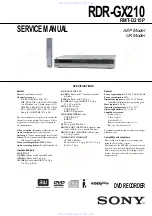
158
NexLog Recorder User Manual v2.2.0
None
: (default) None of the ports carry RTCP data (which means that
none of them will be ignored).
Odd
: RTCP data appears on odd port numbers. (Typically, RTCP is
transmitted on the next higher odd port number above each RTP port.)
Even
: RTCP data appears on even port numbers.
RTP packets contain information in their headers identifying the sources of the
RTP data stream. This includes the following identifiers:
Synchronization Source (SSRC)
: A unique numeric ID for a
unidirectional stream of RTP packets. The synchronization source within
the same RTP session is unique.
Contributing Source (CSRC)
: A unique numeric ID identifying a
contributing source for a mixed stream of RTP packets (a stream that
has been generated from multiple sources). In some situations, it is used
to identify a previous origin of a stream of RTP packets (that is, a
previous SSRC).
These data are used to identify audio streams, and hence, the audio that
belongs to a VoIP call.
In addition, the SSRC is also used to aid in identifying call termination. When
the SSRC changes, it is an indicator that the audio stream from one party has
ended. However, there may be cases where the SSRC changes briefly but does
not indicate a separate call. This can result in a call being broken
inappropriately into two parts or in a spurious call with a very short call length
(e.g., 0 seconds). The following parameter is used to control call breaks for these
different situations.
Break on SSRC
: Controls how to handle SSRC changes in determining call
termination. Valid values are as follows:
Rtp Ssrc Nobreak
: When the SSRC changes, do not “break” the call.
Rtp Ssrc Break
: (default) When the SSRC changes, “break” the call (that is,
treat it as a new call).
Rtp Ssrc Fuzzy
: When the SSRC changes, “break” the call. However, if the new
SSRC is numerically close to the current SSRC, do not break the call. This
setting is used with some VoIP implementations that have atypical SSRC
changes, such as with certain configurations of Cisco Call Manager.
Jitter Buffer
: Jitter Buffer Size in microseconds. Default: 2000000 (2 seconds).
Range: 0 to 5000000 (5 seconds). The recorder uses a jitter buffer to enable
proper synchronization and a smoother flow of data. The larger the jitter buffer,
the higher the recorder memory usage, as well as the higher the load on the
recorder CPU when jitter is encountered.
CallID Field Name
: If this value is set to the name of a text metadata field that
has been added to the recorder's database, and the signaling protocol from the
















































